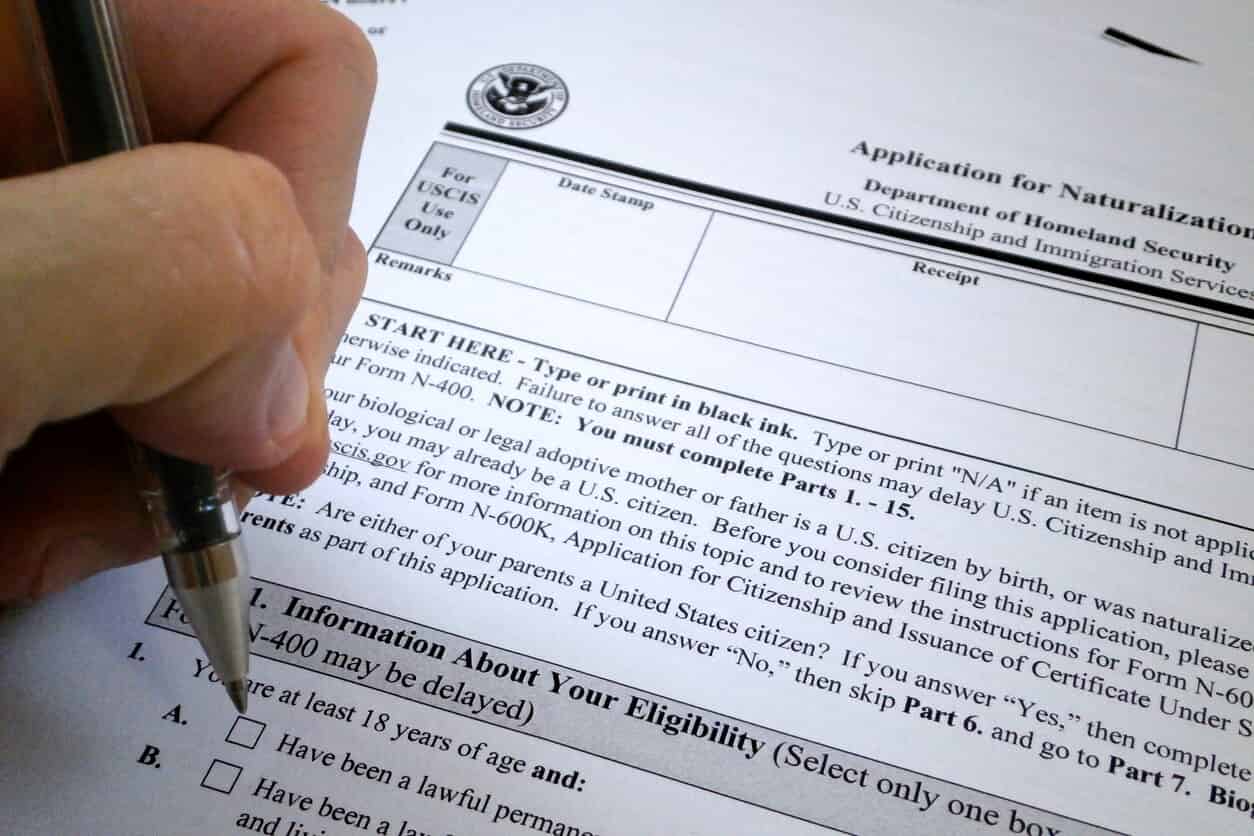For many immigrants, becoming a U.S. citizen is a long-awaited dream. The ability to run for office, vote in elections, access scholarships, and receive public benefits are just several reasons U.S. citizenship is so appealing. However, the path to citizenship can be fraught with complexities. Here’s what you need to know about the path to naturalization.
Citizenship & Naturalization
First, it’s important to distinguish between the two ways immigrants may become U.S. citizens—the process of citizenship and the process of naturalization. The citizenship process is available to immigrants whose parents are already U.S. citizens. Individuals under 18 may pursue this route. On the other hand, the naturalization process requires individuals to meet specific requirements that, once met, grant them lawful permanent residence.
10 Steps
The U.S.’s naturalization process includes ten steps, as outlined by the U.S. Citizenship and Immigration Services (USCIS). Following these steps thoroughly and accurately is essential for success.
Step 1: Investigate Heritage
Some applicants may already be U.S. citizens if they were born in the country. If an individual’s parent is already a U.S. citizen by birth or naturalization, they too may already be a citizen. To guarantee citizenship, individuals may request a Certificate of Citizenship based on their parent’s status.
Step 2: Determine Eligibility
All naturalization applicants must be 18 years old and have lived in the U.S. as a permanent resident for a minimum of five years (or three years if they married a U.S. citizen). Consistent residence and physical presence in the country are required for any successful application. Applicants should also have a firm grasp of the English language, being able to read it, write it, and speak it.
Step 3: Prepare the Application
Preparing a naturalization form can be a complicated process—one an immigration lawyer can help applicants navigate. Completing this application is the first major step in securing citizenship. Therefore, it is highly recommended to have a qualified attorney review the materials prior to submission. Any errors could result in a denial of the application.
Step 4: Submit the Application
After the naturalization form is completed, several other documents and fees should accompany it for submission. Once submitted, an application’s status can be found on the USCIS website. Processing times are listed there as well.
Step 5: Attend the Biometrics Appointment
Often, the USCIS requires applicants to provide fingerprints and photographs for registration. These documents are then used to run background checks and to sort through criminal records. These FBI-assisted evaluations may be a determining factor for eligibility. Several crimes such as rape and drug trafficking can bar an immigrant from ever achieving citizenship.
Step 6: Attend the Interview and Test
If the application and background checks have been cleared, applicants are required to visit the USCIS office for an interview. The interviewer will go over the completed application and additional submitted documents and ask some questions that may appear on the U.S. citizenship test. These questions may evaluate an applicant’s understanding of the English language or of the country’s government and heritage.
The actual exam is usually taken on the same day as the interview and consists of two components: the English exam and the civics exam. The English exam includes assessments in reading, writing, and speaking. The civics exam requires answering six out of ten government or history questions correctly. These questions will be pulled from a list of 100 questions and may vary depending on the applicant’s age, education, and available study opportunities. These tests may be taken only twice.
Although this momentous day may feel insurmountable, the USCIS provides several resources applicants may use to prepare.
Step 7: Wait for Updates
Once all of these steps are completed, applicants must wait for an official ruling on their application. Approved applications will confirm enough evidence has been secured to qualify for citizenship. Denied applications will indicate insufficient areas where qualifications were lacking. If faced with a denial, applicants may request a hearing to appeal the ruling.
Step 8: Attend the Oath of Allegiance Ceremony
Successful applicants are often asked to attend an oath of allegiance ceremony on the same day as their interview. During this ceremony, an applicant acknowledges their duty of allegiance to the U.S. If a ceremony is not scheduled on the day an applicant successfully completes their test and interview, they may need to schedule for another day.
Step 9: Take the Oath of Allegiance
Applicants are not granted official citizenship until they complete the oath of allegiance. In this judicial ceremony, a USCIS administrative judge often issues the oath to qualified applicants.
Step 10: Obtain Citizenship
After applicants are successfully naturalized and granted citizenship, it’s crucial for them to understand how their new status benefits their lives. The USCIS can provide new citizens with more information about the rights and liberties now available to them. Of course, naturalized citizens must also understand their legal and financial responsibilities to the U.S., including paying taxes and serving on a jury.
Your Immigration Lawyers
Here at Pearson Butler, we know how complex and daunting the naturalization process can be for applicants. Our team has years of experience advocating for immigrants seeking U.S. citizenship, and we strive to work closely with each client to effectively identify and reach their goals of living in the United States. No matter where you are located, you can find the skilled immigration counsel you need at Pearson Butler.
Contact us today at (800) 265-2314 to schedule a free consultation!




.jpg)
.jpg)